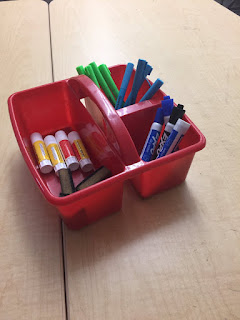 |
| Huh? |
When a student is engaged, they are actively thinking about the concepts being presented to them and thinking about them at a level that challenges them to grow in their understanding of the concepts in a captivating way. I emphasize the "and" because students are not engaged if the content is too easy or too challenging for them. With the former, the thinking that is taking place is simple recall that is relatively mindless; thus, their engagement to the task in very minimal. On the flip side, if the task is too challenging, the student is likely to become frustrated and becomes disengaged as a result, I understand that these arguments are seemingly only pertaining to activities given to students. However, the same logic can be translated to any classroom discussion or lecture. For students who already understand the concepts, they can appear to be engaged by looking at the teacher, but mentally they could be checked-out due to boredom. On the other hand, students who do not have the prior background knowledge cannot be appropriately engaged in the dialogue happening as they are unable to process what they are hearing. Despite this phenomenon, students are learning how to adapt their behavior and appearance in class so that they can look to be engaged (Price, 2014). We must then work to captivate students, hopefully just as much as Jon Stewart is here.
Now how do we accomplish this? Ellen Skinner and Michael Belmont offer a motivation model for the psychological needs of a students in order for the student to become engaged.
 |
| Skinner & Belmont, 1993 |
They also offer an argument that there is a reciprocal relationship between teacher behavior and student engagement that justifies this model. Take a look at the abstract of the article below to see a summary of the article's premise and findings related to the model. The entire article does a nice of explaining this phenomenon.
In a different study, Helen Marks looked to examine student engagement at the elementary, middle, and high school levels through three driving questions. The first concerned how the student's orientation to school, or their perception of school, impacted engagement. Marks found that "at all grade levels, positive orientation
toward school, as reflected in school success, solidly predicts engagement;
negative orientation, as reflected in alienation, just as solidly
predicts disengagement." For the second question, Marks examined the efficacy of authentic instructional work and social support. It was found that, for all students, authentic instructional work contributes strongly to student engagement as well as social support of learning (i.e. a positive classroom environment and parental involvement). Finally, with her third research question, it was found that the subject matter influenced engagement at the elementary and high school levels, but not at the middle school level. It is important to keep these findings in mind when evaluating student engagement.
Shedding more light on student engagement, Adene Klem and James Connell worked to show the relationship between student engagement and teacher support. They are summarize their findings well below.
"These results indicate teacher support is important to student engagement in school as reported by students and teachers. Students who perceive teachers as creating a caring, well-structured learning environment in which expectations are high, clear, and fair are more likely to report engagement in school. In turn, high levels of engagement are associated with higher attendance and test scores - variables that strongly predict whether youth will successfully complete school and ultimately pursue post-secondary education and achieve economic self-sufficiency. Links between teacher support, student engagement, and academic performance and commitment hold for both elementary and middle school students, providing further support for an indirect link between student experience of support and academic performance through student engagement" (Klem & Connell, 2004).
These results indicate teacher support is important to
student engagement
in
school as reported by students and
teachers. Students who perceive teachers as creating a
caring, well-structured learning environment in which
expectations are high, clear, and fair are more likely to
report engagement
in
school. In turn, high levels
of
engage-
ment are associated
with
higher attendance and test scores
-
variables that strongly predict whether youth
will
successfully complete school and ultimately pursue post-
secondary education and achieve economic self-
sufficiency.” Links between teacher support, student
engagement, and academic performance and commitment
hold for both elementary and middle school students,
providing further support for an indirect link between
student experience of support and academic performance
through student engagement.
With all of this in mind, I would have to agree that evaluating student engagement is definitely complex. We can see from the research that it depends on variables outside the classroom; thus, these studies provide evidence that glancing around the room is not sufficient in determining classroom engagement. Even though it may be challenging to reach an accurate conclusion of the engagement of learners in the classroom, it does not change the fact that we, as teacher, should still strive to create lessons that are accessible and challenging to all learners (i.e. differentiated instruction) and captivate their attention in an effort to engage them in the learning process. If a teacher would say that student engagement is too complex to strive for, I would say that we are doing a disservice to our students and not giving them the learning opportunities we deserve. We should be constantly searching for the many ways we can engage learners, even though it might mean leading lessons in an array of formats so that we reach all learners. C'mon, who wouldn't want to see smiles like this everyday from their students?
References
Klem, A. M., & Connell, J. P. (2004). Relationships matter: Linking teacher support to student engagement and achievement. Journal of school health,74(7), 262-273.
Marks, H. M. (2000). Student engagement in instructional activity: Patterns in the elementary, middle, and high school years. American educational research journal, 37(1), 153-184.
Price, D. (2014). Are your students engaged? Don’t be so sure. Retrieved from http://ww2.kqed.org/mindshift/2014/01/21/are-your-students-engaged-dont-be-so-sure/
Skinner, E. A., & Belmont, M. J. (1993). Motivation in the classroom: Reciprocal effects of teacher behavior and student engagement across the school year. Journal of educational psychology, 85(4), 571.


















